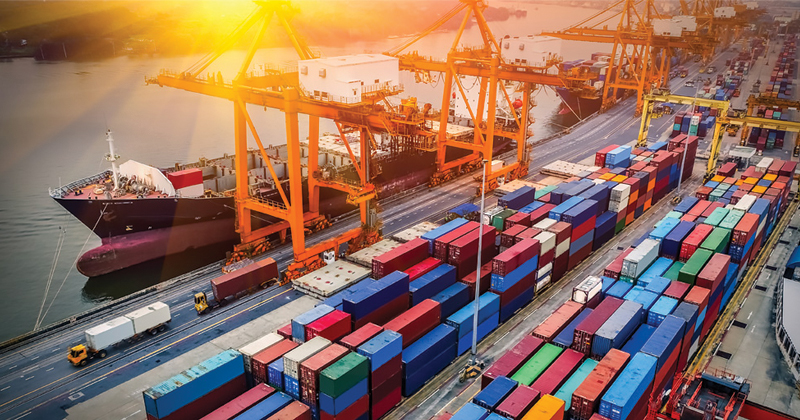With the recent trade tensions, it’s easy to forget that barriers to trade don’t just come in the form of tariffs. Technical Barriers to Trade (TBTs) can be just as challenging for businesses trying to break into a new market. In fact, it’s quite possible for TBTs to get in the way of your cross-border efforts, even in a tariff-free environment.
Here’s what you need to know about TBTs:

What are Technical Barriers to Trade?
Technical Barriers to Trade are a type of non-tariff measure. They arise because each country has its own rules on what sort of products can be sold, and how. It’s not uncommon for a product to face different technical specifications, before it can be sold in another jurisdiction.
An industry where TBTs may arise is in appliances. Many countries have energy conservation measures, in which appliances – such as refrigerators – need sticker labels to show their power consumption levels. This can be problematic, as even the method of determination of the energy efficiency performance and rating conditions can vary between countries. Your product may be rated as more efficient in one business jurisdiction than another.
Other types of TBT measures could cover testing and certification requirements. For example, electrical products must meet the different safety standards of each country they are sold in. Cosmetics, pharmaceuticals, and food and beverage products also face stringent health controls.
On the economic front, TBTs are the most frequent forms of non-tariff measures, affecting 65% of world trade in terms of value, and 35% of product lines1.
The significance of TBTs
TBTs are necessary because they protect consumer health, guard against deceptive practices, or prevent ecological or agricultural damage, among others.
On the downside, TBTs can sometimes be used as a protectionist measure by some countries. They can be used to discriminate against imports, to allow domestic businesses an advantage over foreign competition.
What do TBTs mean to your business?
Illegitimate TBTs have an effect on restricting trade, when it becomes discriminatory or an unnecessary obstacle.
An example of a discriminatory obstacle could be one in which a country applies its technical requirements in a less favourable manner on imported products as compared to a local product of similar nature. For instance, the United States (US) made effective its Family Smoking Prevention and Tobacco Control Act in 2009 to discourage young people from smoking. The Act prohibited the manufacture and sale of clove and most other-flavoured cigarettes in the US, with the exclusion of menthol cigarettes. The consumption of clove cigarettes in the US was largely supported by imports from Indonesia while menthol cigarettes were mainly US-produced. Since clove and menthol cigarettes are seen as similar, this measure was viewed as being discriminatory against the imports of Indonesian clove cigarettes and gave US producers of menthol cigarettes an unfair advantage over other-flavoured cigarettes.
From time to time, TBT disputes are brought up at the World Trade Organisation (WTO). Here are a few cases to help you understand the nature of such disputes:
- “Indonesia Announces Deal with US on Clove Cigarettes Trade Dispute”, and the case summary by the WTO for more technical details.
- “WTO Dispute Settlement: Sardines Panel Sides With Peru”, and the case summary by the WTO for more technical details.
- “WTO Panel Upholds Australia Plain Packaging Policy for Tobacco Products”, and the case summary by the WTO for more technical details.
Preventing illegitimate TBTs: How the WTO TBT Agreement can help your business
The WTO TBT Agreement seeks to ensure that TBTs are fair, and angled at limiting unnecessary hindrances to international trade.
The Agreement recognises that countries have the right to:
- Regulate trade
- Prevent deceptive practices
- Safeguard the interests of domestic consumers, in areas such as safety and environmental protection
However, the WTO TBT Agreement also calls for transparent requirements and procedures, in the implementation of TBTs. It calls for countries to be open about their technical regulations and conformity assessment procedures.
The Agreement also calls for the establishment of an “Enquiry Point” by WTO members, responsible for dealing with queries from other members about TBT issues.
How does the WTO seek to ensure that TBTs are fair?
When draft measures are notified, the WTO TBT Committee recommends that the notifying member allows at least 60 days for other WTO members to provide their comments and voice their concerns and questions to the Enquiry Point, if any.
The triannual WTO TBT Committee meeting also allows WTO members to raise Specific Trade Concerns (STCs).
STCs allow complaints about the proposed or adopted measures of another WTO member. For example, STCs can be raised on the basis of:
- the lack of transparency
- the excessive trade restrictiveness of the measure
- the lack of sufficient scientific basis
- the discriminatory nature of the measure (for example, the measure seems to be aimed at negatively impacting a specific country)
Over the years, the total number of TBT notifications made by WTO members have been rising. There were 2,585 notifications in 2017, as compared to just 1,523 notifications in 2008. The number of STCs raised has also been increasing – there were 178 notifications in 2017, compared to just 106 in 2008.2

What can you do to address TBTs?
If you are planning to export your goods, it pays to keep yourself constantly informed and updated about the TBTs of that particular country that apply to you and make plans to overcome them.
To keep abreast of the latest developments on relevant TBTs, you may register for email notification alerts on eping.wto.org.
Drop us a line at PPD_Enquiry@enterprisesg.gov.sg if your company is facing any TBT-related export issues.
Share your feedback on TBTs here.

